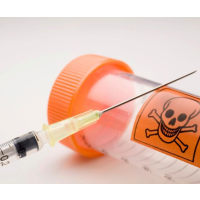Capital Punishment Activists Battle over California’s New Lethal Injection Plan
 (photo: Getty Images)
(photo: Getty Images)
By Sharon Bernstein
SACRAMENTO, Calif. (Reuters) - Advocates and opponents of capital punishment sparred on Friday over California's proposed new lethal injection protocol, highlighting deep divisions in a state that houses a quarter of U.S. death row inmates but has not executed anyone in a decade.
The plan to use barbiturates to execute inmates sentenced to die in the most populous U.S. state drew fire from religious activists, who called capital punishment grisly and anti-democratic at a hearing in Sacramento. Law-and-order advocates urged its adoption.
"As of next month, the state will have been remiss in its duties for a decade," said Michele Hanisee, vice president of the Los Angeles Association of Deputy District Attorneys. "The family members of the victims are dying before the murderers."
The informational hearing was part of the state's process for adopting a new protocol for lethal injection that would use one drug, a barbiturate, to put condemned inmates to death. It would replace a three-drug cocktail that a California court declared unconstitutional 10 years ago because it could possibly cause pain.
Under a court settlement, the state must develop a new procedure for executions. At the same time, Californians have grown more divided over capital punishment, with nearly half the electorate and many top officials now opposing the death penalty.
Death penalty opponents hope to place an initiative on the November ballot that would outlaw capital punishment. On the same ballot, supporters back a different initiative to speed up executions.
"The people on death row, most of them have perpetrated grave crimes," said Linda Fox, a board member of the group Death Penalty Focus, who spoke against the protocol. "But they are still human beings."
There was no proof, she argued, that using a barbiturate to carry out a death sentence would not result in a botched or painful execution.
California juries have sentenced nearly 900 people to death since 1978, but only 13 have been executed. Sixty-eight have died of natural causes, 36 for other reasons.
Of more than 750 inmates currently on death row, seven have been there since the 1970s.
If the new protocol is adopted by corrections officials and voters do not outlaw the death penalty next November, the state could theoretically begin executing 18 prisoners who have exhausted their appeals. Legal challenges to the lethal injection drug, however, could drag on for years.
To Learn More:
California’s Death Penalty Reanimated on a Legal Technicality (by Ken Broder, AllGov California)
California Proposes a One-Drug Solution to Re-Animate the Death Penalty (by Ken Broder, AllGov California)
California Back on the Slow Path to Resuming Executions (by Ken Broder, AllGov California)
- Top Stories
- Controversies
- Where is the Money Going?
- California and the Nation
- Appointments and Resignations
- Unusual News
- Latest News
- California Forbids U.S. Immigration Agents from Pretending to be Police
- California Lawmakers Urged to Strip “Self-Dealing” Tax Board of Its Duties
- Big Oil’s Grip on California
- Santa Cruz Police See Homeland Security Betrayal in Use of Gang Roundup as Cover for Immigration Raid
- Oil Companies Face Deadline to Stop Polluting California Groundwater





